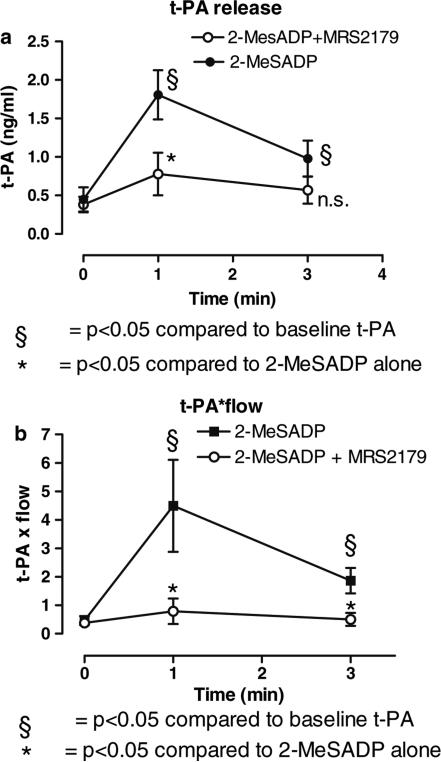Fig. 1.
(A) Illustrates that an ADP analogue release t-PA in the pig coronary circulation and that the effect is mediated by the P2Y1 receptor: Release of t-PA due to continuous intracoronary infusion of 2-MeSADP (10−5 M) (1 ml/min) alone (filled circles, n = 9), or 2-MeSADP (10−5 M) jointly infused with the P2Y1 antagonist MRS2179 (10−3 M) at a rate of 1 ml/min (open circles, n = 6). t-PA was sampled selectively in the coronary sinus. *p < 0.05 compared to baseline. §p < 0.05 compared to 2-MeSADP alone. (B) Illustrates an estimate of differences in total t-PA release: Continuous infusion of 2-MeSADP (10−5 M) at 1 ml/min increased flow in the LAD significantly as measured with the FloMap Doppler wire (data not shown). 2-MeSADP (10−5 M) jointly infused with MRS 2179 (10−3 M) at a rate of 1 ml/min did not increase flow. When release of t-PA was measured in the coronary sinus and factored with the measured flow in the LAD, there was a significant increase of t-PA release due to infusion of 2-MeSADP. The estimate of differences in total t-PA release was calculated by multiplying with the relative increase in flow compare to baseline

